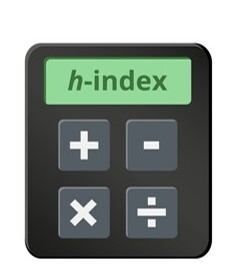Understanding Google Scholar's Citation Metrics and How to Optimize Your Profile


At the heart of Google Scholar's significance lies its comprehensive indexing of scholarly publications, including journal articles, conference proceedings, books, and more. By aggregating citation data from across the web, Google Scholar provides researchers with a powerful way to measure the impact of their research through various metrics, the most prominent being the h-index.
The h-index is a measure of both the productivity and impact of a researcher's published work. It is calculated by determining the number of an individual's publications (h) that have been cited at least h times.

i10-index
Google Scholar also offers other citation-based metrics, such as the i10-index, which represents the number of a researcher's publications that have been cited at least ten times.
Total Citations
The total number of citations a researcher's publications have received is a fundamental metric that reflects the overall impact and influence of their work within the academic community.
Citation Trends
Google Scholar allows researchers to track the citation trends of their publications over time, revealing how their work has been received and cited by peers. It can help identify influential works and emerging research areas.
Citation Density
This metric calculates the average number of citations per publication, providing insight into the quality and impact of a researcher's work.
Publication Year
The publication year of a work is an important consideration, as it helps researchers understand the timeliness and recency of their contributions, which can be crucial for career advancement and funding applications.
Publication Source
Google Scholar identifies the journals, conferences, or other publication outlets where a researcher's work has been published. This information can shed light on the prestige and standing of the venues in which they have been able to publish.
Co-author Networks
By examining the co-authorship patterns of a researcher's publications, Google Scholar can help identify valuable collaborative relationships and research networks.
To optimize your Google Scholar profile and effectively leverage these citation metrics, consider the following strategies:

Claim and Maintain Your Google Scholar Profile
Ensure that your Google Scholar profile accurately reflects your published work by claiming and regularly updating it.

Ensure Accurate Author Identification
Take steps to ensure that your publications are correctly attributed to your profile, such as using a unique identifier like an ORCID iD.

Optimize Your Publication Metadata
Ensure that the information associated with your published articles, such as titles, abstracts, and keywords, is comprehensive, accurate, and optimized for discoverability.

Encourage Citation of Your Work
Take proactive steps to increase the visibility and influence of your publications, such as sharing your work on social media and collaborating with other researchers.

Monitor and Analyze Your Citation Metrics
Regularly review your Google Scholar citation metrics to gain insights into the impact of your research and inform your future strategies.

Leverage Google Scholar's Additional Features
Explore the platform's other practical features, such as alerts for new publications and access to full-text articles.

Are you looking to increase your research impact and elevate your academic standing?
SITA's expert team can help you optimize your Google Scholar profile and boost your all-important h-index. By leveraging our deep understanding of citation metrics and publication strategies, we'll work closely with you to identify high-impact publication opportunities, streamline your submission process, and ensure your research receives the recognition it deserves. Don't let your hard work go unnoticed - partner with SITA today and watch your h-index soar to new heights, propelling your career forward and solidifying your position as a thought leader in your field. Take the first step towards significant academic influence.
If you have any questions, inquiries, or would like to learn more about our services, please don't hesitate to reach out to us. Our dedicated team is ready to assist you.